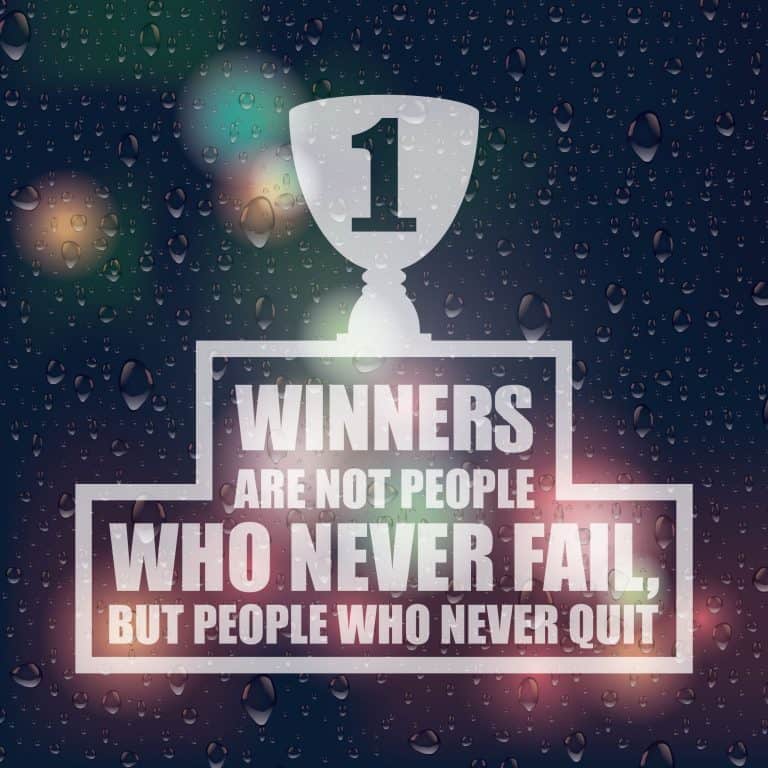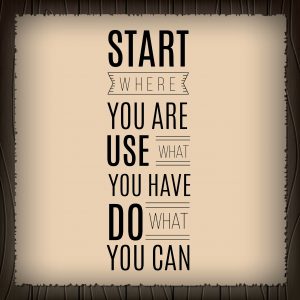Gamification is still very often misunderstood and simply branded as the adding of some game mechanics to a learning process rather than using it to enhance and play into the learner’s motivation. When we go with the mechanical side of gamification of simply adding game mechanics to a process, the first things that are added are badges and leaderboards. Without any consideration as to why they should or shouldn’t be there. These infamous mechanics then tend to be followed by locked content on a timer and the latest one that I experienced forced cohort belonging.
A recent personal success or not…
What compelled me to write this article is a recent personal experience. I had been on the mailing list of s personal development company for some time and had explored some of their free offers a few times. I finally earlier this year bit the bullet and bought the full access to all their programs. On the surface it looked like it could suit me, namely, content organised in quests and some topics I really wanted to delve deeper into.
Well, talk about buyer remorse x100 when I opted into my first-course quest and found out I had to wait until a group started… Seriously!!!! I am not a group learner at the best of times, I like to go at my own pace and consume as little or as much as I have time for. The buying decision moment is the exact moment where you want to impress your buyer and let them satisfy their buying need. Ok, I thought this was basic buyer psychology 0.1 (as in before 101).
But not this time. I was forced to wait despite me pleading with their customer success person that I simply wanted access to the course. But no, they knew better than me the stupid customer that I should study in a group. Nobody ever enquired if that is what I wanted?! In fact, I had signed up to learn from the expert not to hang out with others. In any case, I decided to wait for the group to start and simply do the course when I want after that. The reality is that I only logged in a month later for the next time and now my feed was full of missed and failed to attend messages… What a success! So motivational NOT!!!!!
I took some of the lessons of the said expert and then was once again forced to sign up to some group, which had 0 interest in for me to be able to complete a section and move on. I did what I was supposed to do took another lesson and yet again got stopped by ‘you must post a comment in the group’…Really. At that point the inner bitch started to take over and I developed hate against the platform itself. So much for motivation and success. I gave the customer success people a piece of my mind only to receive yet another confirmation as to how I was such a stupid customer for trying to do my own thing.
Because the content was actually good and the experts on the platform do good stuff, I am now signing up to all quests I am interested in, leave them to lapse and then do the programs in the failed to show up section. That makes the experience for me hassle-free and I avoid group enforcement and still get what I want from it. What this does do at the same time, it reinforces my dislike against the platform each time I use it. I have already told probably 5 of my good friends and now I am telling more people although I will refrain from naming and shaming publicly.
The experience made me think that they probably have no idea what they are doing wrong or maybe even how to put these wrongs right. That is why I decided to write how to work with this and do it better.
Adult learners and motivation
Adult learners learn best when we give them context as in we provide hooks and reference points that they recognise. Attaching new knowledge to existing or replacing existing knowledge to further enhance and develop whatever skill for typically a very individual reason or purpose. The tenacity of the learner to stick with a course are proportionate to the motivation for starting and finishing to be satisfied.
For example in a lot of our corporate learning work when we then really study the motivation of the learner, we will discover that career and personal development are strong drivers and the associated levels of proof or validation required. Depending on the career stage of an individual the level of proof is higher or lower. Someone fresh out of college needs practical project experience and may need certification of such, whereas someone experienced and senior may be simply satisfied to know that they can do the said new thing unless certification is essential to do the job of course. In neither example does it mention we want to study in groups, in fact, a lot of the time it is preferred not to have to be public about it in a corporate setting and the more senior you go, the less publicly they want to admit they need to still learn. No right or wrong just what we have observed.
Going back to the point of adults learning in context, conversations can give that context as much as examples can. I was a tutor for a masters in HR a good few years back, the tutoring group was focused on giving context to the main course frameworks and I often facilitated or stimulated the discussion on how a framework could be perceived in reality. This conversational sense-making really helped students finish a qualification they were keen to finish in any case. The key to what made that work is that it was voluntary to take part. I had no idea of the actual exam questions so I couldn’t guide anyone there, but I did have insight into the application of the frameworks and could give that perspective. Personally, I always learned a lot too and found the discussions could often take such unusual twists and turns that at the end we could say we dissected current situations in the workplace or even society.
Effectively what I am saying is that adults learn best in context, that context can be social but it doesn’t have to be. In contrast to children and their development, giving structured pathways is important because in many ways they still have to learn the foundations. Social interaction for children is part of their development too which starts with the family unit and expands from there. Attending school and meeting other children gives them peer references that develop their personalities. As we grow older we adapt to what has worked best for us individually and for some of us that means social learning and for others a more private approach.
In a gamification of learning context understanding your learner is of critical importance. How we consume content is different for everyone, which is why some will gravitate towards reading, others towards listening, watching, trying or playing.
Milestones and restrictions in gamification
The social factor was one element that caused my frustration and the other were the restrictions placed on when I could or couldn’t start a quest and having to do social as a way of completing the parts of the course. To me, it felt like I was in some kind of ‘nanny state’ where the all-knowing gospel aka the platform would tell me what was good for me. It basically called on my inner rebel to work around the system.
In gamification, milestones are often the point at which you unlock more points or more content or a badge or whatever reward that makes passing a milestone meaningful. I am a big fan of doing this and making it as relevant as possible to the person and the course they are taking. I do start from the assumption that the course steps and the steps required to complete a course are also building on each other and relevant to the student.
In my example, I had a distinct disconnect with what I wanted to achieve and what I was allowed to do based on the restrictions placed on the course by the creators of the platform.
What is really key is to learn from the free to play casual games on this. Most of them give you access to playing without major restrictions. It may take you longer or more tries for you to finish in comparison to those who pay for additional boosters and other superpowers, but you can play and enjoy the experience regardless. If you already have a paying audience like in the case of the course platform, then, by all means, you should give your students access to what they came for. That you want to limit them from starting 10 courses all at the same time, that is fair in my view. But let them at a minimum start with the very one that they converted on. This, in my opinion, is a no-brainer!
We worked on a project recently which basically took a 1-day classroom-based course and transformed it into an online version. We learned from the client that the invite to the program was treated as a special honour and attendees knew they would walk home with a bag full of privileged first viewer knowledge and some cool branded merchandise. We broke the course down into several levels. The first three lessons ended into a knowledge-based quiz which then unlocked attendance to an online event. At that point, they unlocked their first branded items reward and their subsequent invitation to continue. Course completion had to be done by a specific date and the final tasks were linked to implementation.
The gamification elements we used were as follows: VIP access only, milestone unlocks, badges, completion points, leaderboards for completion as well as performance and the branded goods. Each week they received communications and nudges to keep moving forward and complete the program.
It took longer in terms of time to implement and significant investment on the client-side to work on the several component parts, but the engagement was better than what they had expected and implementation, which was their ultimate goals was really high.
From a gamification perspective this tells me that when you use the correct mechanics in the right places, you create the dynamic you want for people to achieve. I can definitely confirm that gamification works even for small badges and for access to milestone unlocks, in this context, we had grown-ups demanding them in real-time. Interestingly we didn’t include any social dynamic where people had to join a group, yet questions did get asked and communications did take place.
Can gamification inhibit your learner’s motivation?
In conclusion, can gamification inhibit your learner’s motivation? Absolutely it can work in favour as well as against you. The more you understand your learner, the better the choices you can make around what will help them achieve their learning goals and your objectives as the organiser as well. Failing to understand their motivation and failing to leave enough options open for adults to adapt consumption to their way of learning will result in friction, discontent and ultimately a negative experience.





